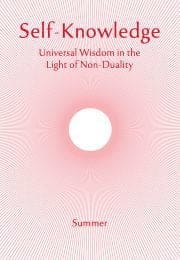Who Are You My Dear One?
The Thousand Teachings of Shankara, Part One, Section One
Some of us come to the non-dual teachings with an outlook shaped by the belief that there exists a Supreme Being who commands our deepest respect and gratitude, in which case we may be unsettled if the non-dual teachings seem to question the validity of the distinction between the Supreme and the individual. Alternatively, we may approach with the contrary idea that belief in such a Being is unfounded or irrational, in which case we might be challenged by the way in which non-duality recognises the principle of an ultimate source and controller of the world. Either way, it is helpful to be reflective and open to new insights.
In the first part of the text known as The Thousand Teachings, by the great philosopher-sage of non-duality Shri Shankara, the teachings are addressed to a student who does hold the conventional understanding of revealed scriptures that the way to the highest good is through worship of a Divinity that is entirely different from oneself. In this passage, Shankara shows how the scriptures themselves point beyond the limitations of the student’s present conceptions.
The Thousand Teachings is of particular interest to us because it is the one text that most scholars agree was almost certainly written by the original Shankaracharya, and which is not a commentary on something else. Shankara probably lived in the eighth century of the common era. Since then, many writings have been attributed to him, but in the light of recent scholarship, most of these are now thought to have been composed by followers. And the majority of Shankara’s own writings are commentaries on the Upanishads, the Bhagavad Gita and the Brahma Sutras. The Thousand Teachings is the one text in which we can be reasonably confident that Shankara himself is expressing his own views directly. That said, scholars are not certain that it was originally composed as a single work in its current form, which consists of a prose part in three sections, and a second part in 19 chapters of rhythmic verse. It is possible that these elements were written at different times with different audiences in mind, and only later brought together.
It is characteristic of Shankara that he shapes his presentations according to the intended audience. Because the first section of the prose part, which we are considering here, is addressed to someone with conventional views on theology and ceremonies, Shankara does not use much logical and philosophical reasoning initially, but simply presents many passages from the revealed scriptures which the student is bound to respect, showing how they may be understood in a new way. Let us see how the presentation unfolds.
First comes the question of who is ready to receive the teachings. It is said that they should be imparted to one who has become indifferent to the world and adopted the life of a renunciate. This was an appropriate expression at the time and place in which it was given. What is essential then and now is to be convinced that nothing finite in the world will bring us complete fulfilment and inner freedom. This conviction is the substance of true renunciation, and opens the way of enquiry leading to liberation, if there is also willingness to trust and apply the guidance one is given. [The Thousand Teachings 1:1-3]
Evidently our student meets these requirements and the instruction proceeds. At this point it is said that the teacher may notice in the student obstacles to a right understanding. These are unhelpful qualities, such as vanity, ill-temper and confusion. These mental conditions are to be balanced by the practice of opposite qualities like forbearance and goodwill to all. [1:4-5]
We note the brevity of what is said on these matters. Evidently this is meant to be a condensed overview of the whole field.
When the student’s mind has been thus prepared, the central message is conveyed by the teacher. It is that the true Self of every human being, when distinguished from all that is not-Self, is in essence not other than the Supreme Being, free of all limitations. Shankara quotes many texts from the Upanishads to this effect, including: ‘The Self indeed is this whole world’, ‘That which is beyond hunger and thirst’, ‘Knowledge-bliss’. It is taught that such texts are to be reflected on over and over. [1:6-8]
Next, in this paradigm case presented by Shankara, the student is asked by the teacher: ‘Who are you, my dear one?’
Subscribe or enrol for free guest access to read all of this article and Self-Knowledge online.
Already subscribed or enrolled? Log in:


